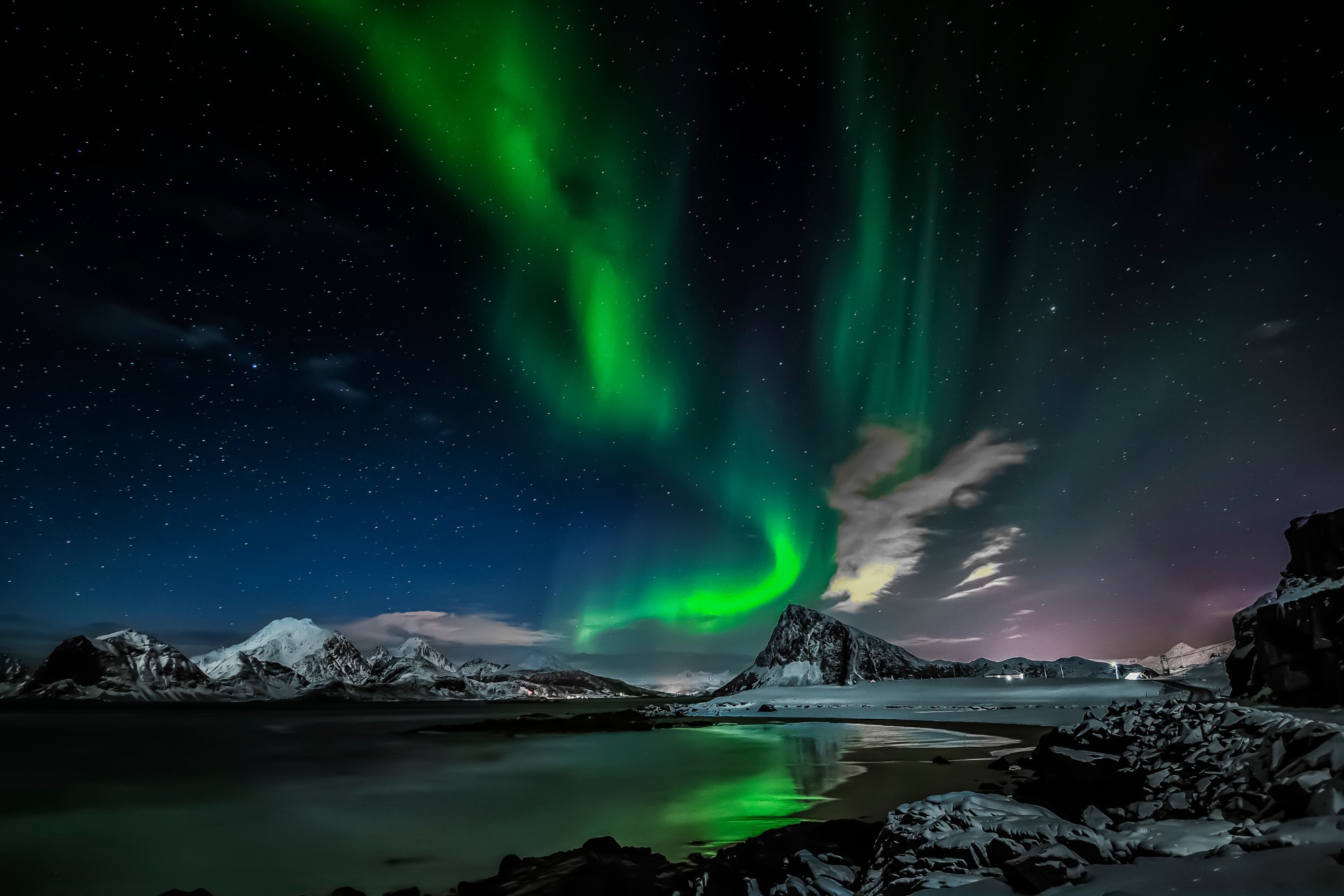 The cosmos put on a spectacular show over the weekend as Earth bore witness to its most potent geomagnetic storm in more than two decades. A barrage of solar storms bombarded our planet, igniting vibrant auroras that graced the skies as far south as Florida and causing temporary disruptions to power grids and satellite communications.
The cosmos put on a spectacular show over the weekend as Earth bore witness to its most potent geomagnetic storm in more than two decades. A barrage of solar storms bombarded our planet, igniting vibrant auroras that graced the skies as far south as Florida and causing temporary disruptions to power grids and satellite communications.
The remarkable celestial spectacle unfolded as a series of solar storms, known as coronal mass ejections (CMEs), collided with Earth’s magnetic field. These CMEs, unleashed by a colossal sunspot named AR3664, unleashed a cosmic dance of charged particles that penetrated deep into our atmosphere. The result? A breathtaking display of multicolored auroras, stretching far beyond their usual polar confines, captivating onlookers across the globe.
Astronomers were astounded as the intensity of the geomagnetic storm surpassed expectations, briefly reaching “extreme” G5 status on two occasions during the weekend. This rare classification, akin to the infamous Carrington Event of 1859, marks a significant milestone in our cosmic journey, as Earth hadn’t encountered G5 conditions since the Great Halloween storms of 2003.
While G5-class storms carry the potential for catastrophic disruptions, including satellite malfunctions and power grid failures, the impact this time remained relatively minor. Aside from some “power grid irregularities” and temporary glitches in GPS and satellite services, Earth emerged largely unscathed from the cosmic onslaught, according to experts at the National Oceanic and Atmospheric Administration’s Space Weather Prediction Center (SWPC).
The resurgence of solar activity comes amidst speculation about the onset of solar maximum — the most active phase of the sun’s 11-year cycle. Previously anticipated to occur next year, solar maximum appears to have arrived sooner and with greater intensity than anticipated. AR3664, comparable in size to the Carrington sunspot, unleashed a series of X-class solar flares, including one of the most potent blasts of the current solar cycle, further fueling the celestial drama.
As the solar cycle progresses, astronomers anticipate the possibility of more G4 or G5 disturbances in the coming years. While AR3664 retreats from Earth’s vicinity, its fiery legacy serves as a reminder of the awe-inspiring forces at play in our cosmic neighborhood.
As we marvel at the celestial spectacle and await the next cosmic drama, let us revel in the majesty of the universe and the wonders it has in store. Stay tuned for more updates and the latest gossip on celestial phenomena and other intriguing stories that captivate our imagination and ignite our curiosity about the mysteries of the cosmos.





